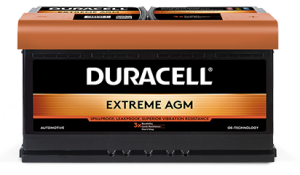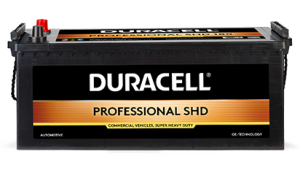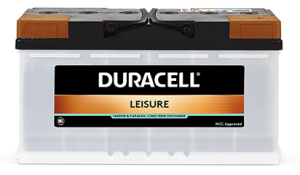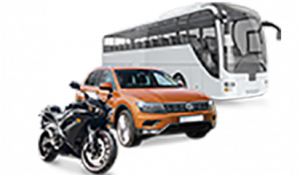NEWS & PRESS
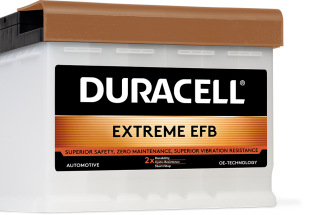
Two different battery technologies are used in vehicles with automatic start-stop systems, depending on the energy requirement and the required vibration or cycle stability.
- EFB (Enhanced Flooded Battery)
- AGM (Absorbent Glass Mat)
EFB battery
- EFB - Enhanced Flooded Battery, the cycle-resistant starter battery with liquid electrolyte.
- = AFB - Advanced Flooded Battery
- = ECM - Enhanced Cyclic Mat
- Running Bull EFB - Starter and on-board power supply battery for vehicles with high energy requirements and simpler start-stop systems or increasingly also used as back-up battery in electric cars
- for small cars up to upper middle class
- up to 270,000 engine starts
EFB technology is used primarily in simpler start-stop systems and generally in vehicles with high energy requirements. Primarily for small cars up to the upper mid-range. The battery achieves high vibration resistance and twice the cycle life (compared to conventional starter batteries). Furthermore, the carbon additives lead to a significant reduction in charging time! The EFB battery is a further development of the conventional wet battery. Special mass additives and the use of a plate scrim (fleece layer) provide additional support for the active mass. If recuperation (recovery of braking energy) is also operated in the vehicle, the EFB battery works artificially at a lower state of charge (SOC State Of Charge at approx. 70%). Depending on the driving profile, a conventional wet battery in this application will be defective within a few months due to the extremely high cyclical load.
Changing an EFB battery
If a motor vehicle is equipped with an EFB battery as standard, this may be replaced with an EFB battery or, under certain circumstances, with an AGM battery. In the same housing and similar performance class.
The start-stop system was developed to reduce CO2 and fuel consumption. In addition to an energy management system and a battery sensor, special start-stop batteries are absolutely necessary to implement this system.
AGM battery
- AGM = Absorbent Glass Mat: the acid is absorbed into the glass fleece and thus bound.
- Starter and on-board power supply battery for start-stop vehicles with highest energy demand and brake energy regeneration
- for medium- and luxury-class vehicles
- up to 360,000 engine starts
- Back-up battery for start-stop vehicles or electric cars with highest energy demand and brake energy regeneration
AGM technology is mainly used for start-stop systems with the highest energy demand and brake energy recovery. It is primarily used in mid-range and luxury class vehicles. AGM (Absorbent Glass Mat) is a recombination battery.
EFB battery
- EFB = Enhanced Flooded Battery: the cycle-resistant starter battery with liquid electrolyte.
- Starter and on-board power supply batteries for vehicles with high energy requirements and simpler start-stop systems or increasingly also used as back-up batteries in electric cars
- for small cars up to upper middle class
- up to 270,000 engine starts
EFB technology is used primarily in simpler start-stop systems and generally in vehicles with high energy requirements. Primarily for small cars up to the upper mid-range.
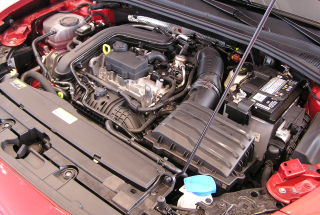
The installation location and the resulting maximum ambient temperature must be taken into account:
With the AGM battery, it is essential to avoid a "build-up" of the thermal load due to (extremely) high ambient temperatures (thermal runaway). For this reason, the ambient temperature must not exceed +55 degrees Celsius. +85 degrees Celsius, not an uncommon value in the engine compartment, especially in summer, is considered uncritical for a maximum of 3 hours per day. Otherwise, this can cause premature total failure of the AGM battery, because the separator dries out and the grids can become extremely corroded!
- EFB batteries are usually installed directly in the engine compartment, exceptions prove the rule, as always.
- AGM batteries are often installed in the boot or in the passenger compartment. Recently, however, some car manufacturers have increasingly installed them in the engine compartment, away from the engine block and often equipped with a thermal protection cover.
In some cases, the batteries are installed in the luggage compartment or, less frequently, in the passenger compartment, in order to have the right battery and ambient temperature, safety aspects and optimum weight distribution.
If the battery is installed in the boot (as is the case with many BMW models, for example) or in the passenger compartment, an upgrade to an AGM battery is highly recommended. Especially if there are a large number of additional electrical consumers, maximum vibration/cycle resistance and optimum on-board network stability. This is because the thermal load on the battery due to the effects of heat is negligible here, in direct comparison with the engine compartment. The same applies to an electrical system battery in an electric car, because electric drives emit very little heat to the environment due to their high efficiency.
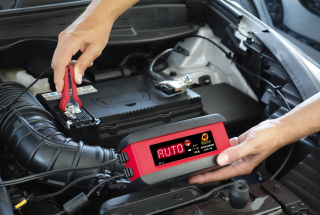
Charging of conventional wet batteries and EFB batteries:
- Before charging, check electrolyte level and, if necessary, fill up desalinated or distilled water to the max. acid residue mark or 15 mm above the upper edge of the plate. The screw connections of the battery must not remain open during charging, it is best to close them again.
AGM batteries must not be opened, refilling with water is not possible or necessary.
- Connect the positive terminal (+) of the battery to the charging clamp (+) of the charger and the negative terminal (-) to the negative clamp (-) of the charger. Only switch on the charger after connecting the battery. Switch off the charger when charging is complete.
- A tenth of the capacity is recommended as charging current. (e.g. 44 Ah: 10 = 4.4 A charging current). With an automatic charger (e.g. Banner Accucharger) this setting happens, as the name suggests, automatically.
- Charging is complete when the current drops to 0 or no longer decreases or the automatic charger switches off. Provide good ventilation during charging. Attention: Highly explosive oxyhydrogen gas forms during charging! Fire, sparks, open light and smoking prohibited!
- AGM batteries must be charged with a voltage regulated charger, e.g. Banner Accucharger (max. 14.8V)!
As a general rule, fully automatic chargers (charging voltage limitation with 14.8V) are well suited for charging the battery installed in the vehicle. If your charger has an automatic mode with voltages >15.9V, the battery must be disconnected from the on-board electronics or removed from the vehicle. In the worst case the installed control units could be destroyed by overvoltages, the resulting damage would be enormous!


